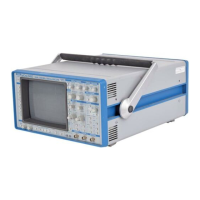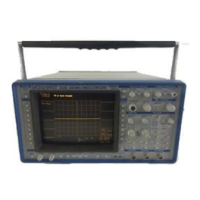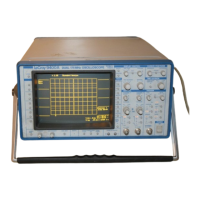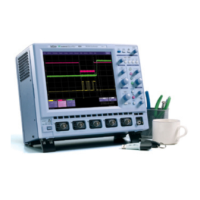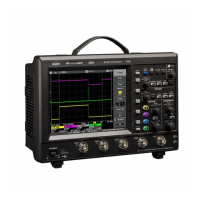B–3
Enhanced Resolution
of the overflowed data — the filter impulse response length —
would be incorrect. This is because in some circumstances an
overflow may be a spike of only one or two samples, and the
energy in this spike may not be enough to significantly affect the
results. It would then not be desirable to disallow the whole
trace.
When to Use It? In general, enhanced resolution is used to replace the averaging
function in situations where the data record has a single-shot or
slowly repetitive nature and averaging cannot be used.
There are two particular situations in which enhanced resolution
is especially useful. One is when the signal is noticeably noisy
and measurements of the noise are not required. The signal can
be “cleaned up” by using the enhanced resolution function. The
other is when — even if the signal is not particularly noisy —
high-precision measurements of the waveform are required
(when using Expand with high vertical gain, for example).
Enhanced resolution will then increase the resolution of the
measurements.
The examples on the following pages illustrate how enhanced
resolution can be used.
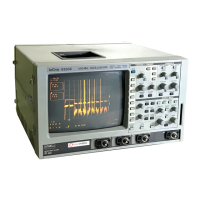
